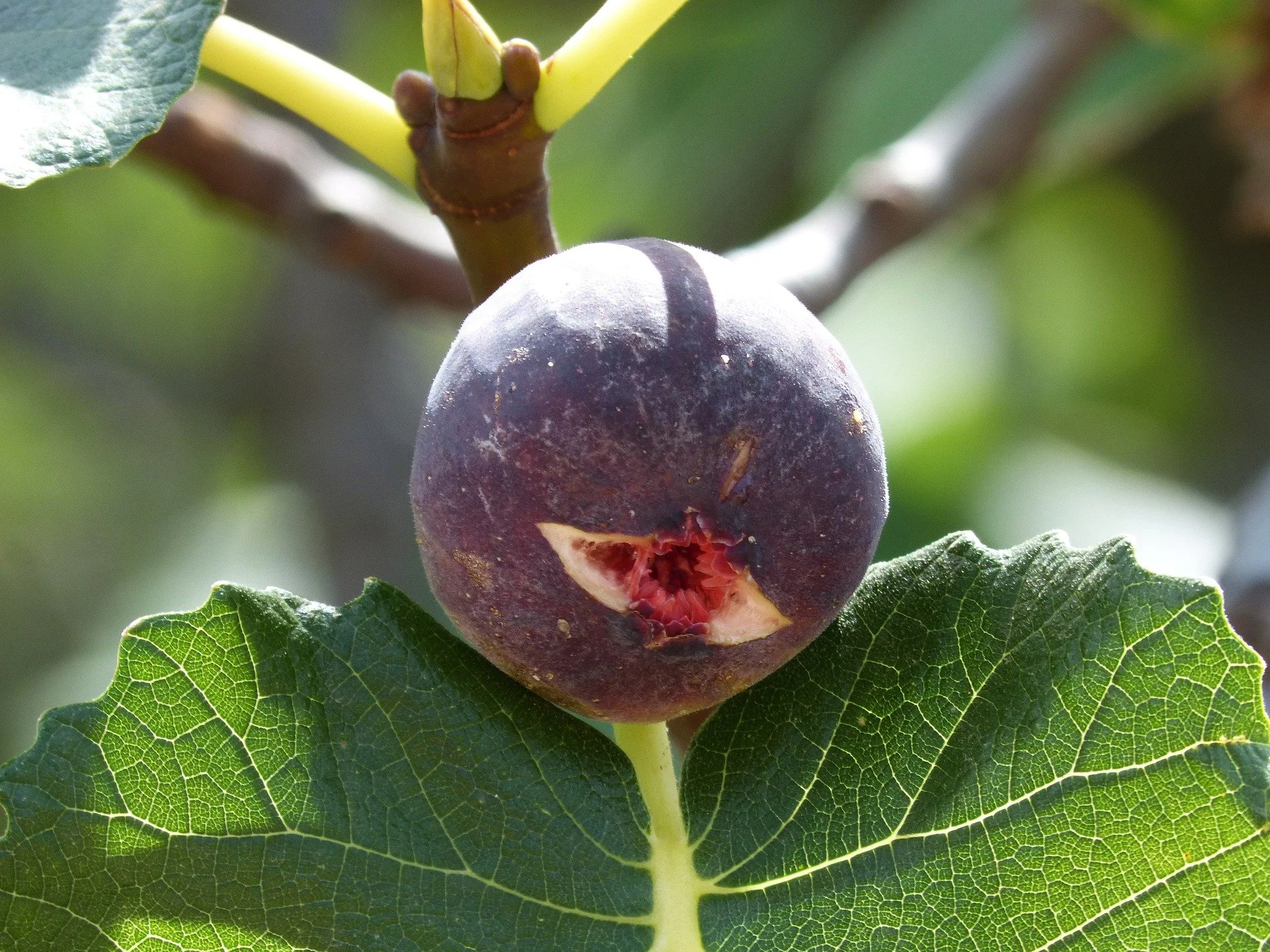Fig season is approaching in the Snoddy garden. I grew up eating fresh figs, and as an adult was surprised to find that not everyone loves them. The sweet, gritty flesh is an acquired taste, like coffee, dates, olives, or beer. For some, the flavor is fine but the texture is unpleasant.
Figs are nutritional powerhouses, containing fiber, antioxidants, minerals, vitamins. Figs consist of 55% natural sugar, making them one of the sweetest fruits available. They can be eaten fresh or dried, plain, stuffed with cream cheese and drizzled with honey, or wrapped in bacon and baked. Figs makes a great canned jam, or they can be combined with raspberries, oranges, and grapes to make FROG jam.
The unique thing about the common fig (Ficus carica) is that what we think of as the fruit is actually the flower. The yellow, green, or purple mature fruits are what is called an “enclosed inflorescence” because the male and female flower grow inside what we consider to be the skin or peel, also called an infructescence. Figs are one of the few fruits that can develop without external pollination (“parthenogenesis”). A type of wasp enters the fruit through a tiny hole at the base of the infructescense, pollinates the fruit and dies. These entryways are easily seen on the ripe fruit, opposite the stem. The fig interior contains an enzyme called ficain that dissolves and absorbs the wasp, so you aren’t munching on a wasp cadaver as you eat one. Some types of commercial figs have been bred to develop without pollination. If the wasp thing freaks you out too much, buy packaged fruit marked “California figs” or packages that indicate the fruit was raised without insect pollination.
Grow figs in full sun to part sun, in neutral to acidic soil. For best results, plant is humus-rich soil that is moist but well-drained. The plants are tolerant of neglect once established, but light pruning in winter can force the formation of new branches. Fruits are borne on new growth, so a cutback increases fruit yield. With time, plants can become too dense, so prune out a few of the oldest stems each year to increase air circulation. Figs are cold hardy in zones 7-10. Plant them in a protected area in the coolest parts of zone 7. Plants are easy to propagate from cuttings.
Figs are self-fruitful, so you only need one to have a crop. Be aware that these shrubs can grow quite large – thirty feet or so, and up to ten feet wide. Figs live a long time, usually thirty years or more. In my part of the southern US, most home plants are one of three varieties: Celeste, Brown Turkey, or LSU Purple. These have purple to brown fruit. If you decide to try one in your home landscape, consult your Extension agent to determine which varieties do best in your particular zone.
The small hairs on fig’s leaves can cause itching, so wear long sleeves when harvesting. Avoid the milky sap, too, as this can cause skin problems for some people. Don’t feed figs to dogs, cats, or horses. Be aware that birds and varmints will harvest some of the fruit for you. You can drape smaller shrubs with netting to exclude birds, but this is more difficult once the shrubs gain size. I always leave mine undraped and just pay the critter tax of shared fruit.
The entry hole is evident at the bottom of this ripe fruit.
A cluster of unripe fruit. Fig leaves are large.

